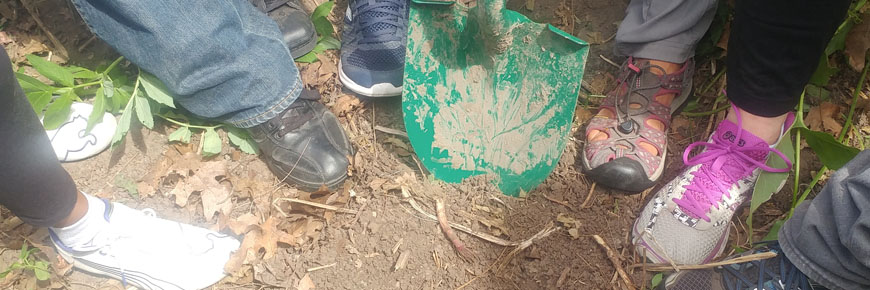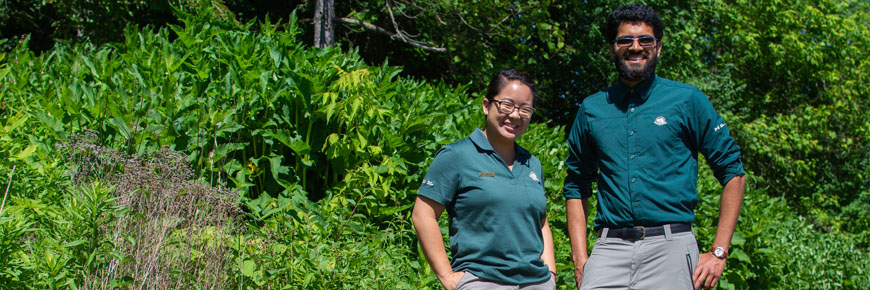
"Mood Walks" for mental health
The Mood Walks Program at Rouge National Urban Park is part of a larger movement that champions “green exercise” as a way to improve mental health.
“I go to nature to be soothed and healed,” wrote the American naturalist John Burroughs, “and to have my senses put in order.”
Anybody who has ever taken a long, unhurried hike knows how nature can affect our mood and outlook. Turtle ponds make us watchful (in a good way). Seedlings are inspiring. Crazy-looking fungi make for very shareable photos.
The participants in Mood Walks know that nature can take you out of yourself.
Led by the Canadian Mental Health Association (Ontario), Mood Walks for Campus Mental Health is a province-wide initiative to promote “green exercise.” The idea is that, like music and art, walking in nature can be a form of therapy that provides measurable results.
A 2015 study published in the U.S. Proceedings of the National Academy of Sciences found that a ninety-minute walk in a natural setting had mental health benefits. The walks reduced “rumination” (thinking repeatedly about negative aspects of yourself). Brain scans also showed less activity in a part of the brain associated with mental illness. Walking in an urban setting, by comparison, showed no such effects.
The downside of concrete, noise and traffic jams
As part of the Mood Walks initiative, Rouge National Urban Park has partnered with Scarborough Health Network in Toronto to offer their own walks. The participants are young adults in the Child and Adolescent Mental Health Program of the hospital network.

Rouge National Urban Park leads about ten Mood Walks a year, from spring to fall. Each walk has a different theme, ranging from “butterfly day” to “yoga and meditation in the park.”
As a result of feedback from participants, some walks have come to include a stewardship element: walkers help re-establish a pollinator garden to attract bees, birds and other pollinators.
Before and after each walk, participants are asked to rank their level of anxiety, happiness and energy.
Stephanie McCall, a social worker at Scarborough Health Network, says that in general, participants report improvement in all three areas after the walks.
“Mood Walks allows me to connect with nature and chill with people,” wrote one participant. Another commented: “Find your way through nature. Find your way in life.”
In a number of American states, doctors and other healthcare professionals can now prescribe park visits for a patient’s health. Psychiatrist Nathaniel P. Morris supports the movement but notes that it isn’t yet a cure-all: Mental health patients, especially the unemployed and homeless, may not have the means to travel to parks for their prescription. Dr. Morris adds that we need more data to determine the precise health effects of these programs.
Prescribing parks

Jessica Yau, a Partnering and Engagement Officer at Rouge National Urban Park, attends every walk. “It’s very rewarding to be able to work with the community and see the impacts,” she says.
She adds that the park would like to offer winter Mood Walks as well: “We’re doing some shopping to create a ‘library’ of winter clothes that participants can use if required.”
And winter, believe it or not, can have its own therapeutic effects. “It is in midwinter,” wrote the conservationist Aldo Leopold, “that I sometimes glean from my pines... a curious transfusion of courage.”More information
Mood walks for campus mental health- Date modified :